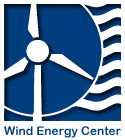The commercial wind industry has maintained an unusually high degree of standardization in turbine technology for going on 25 years. Wind energy experts usually attribute this convergence to the technical superiority of the now standard 3-blade upwind design, often referred to as the “Danish concept,” or to a grassroots, “bottom up” development path that allowed Danish manufacturers to build the world's most reliable turbines in the 1980s. This new history of the modern wind industry, which focuses on the evolution of turbine design after 1970, challenges both of these explanations. It demonstrates that there is no technically optimal turbine configuration; competing designs offer advantages and disadvantages depending on the contexts in which they deployed. And while there is much to commend about Danish wind engineering culture in the early decades of the modern industry, the unique characteristics of Danish manufacturing networks cannot by themselves explain the emergence and persistence of a global industry standard. An ecological perspective captures the influence of broader environmental conditions—which include social, natural and technical factors, at different scales, over time—in shaping the evolution of a standard better than existing technological systems theories.
Why Do Wind Turbines Have Three Blades?
Date:
Thursday, February 12, 2015 - 2:30pm
Location:
Gunness Student Center Conference Room, Marcus Hall
Year:
2015
Semester:
Speaker(s):

